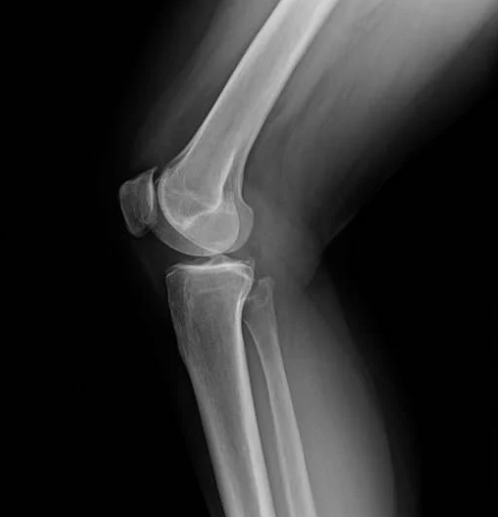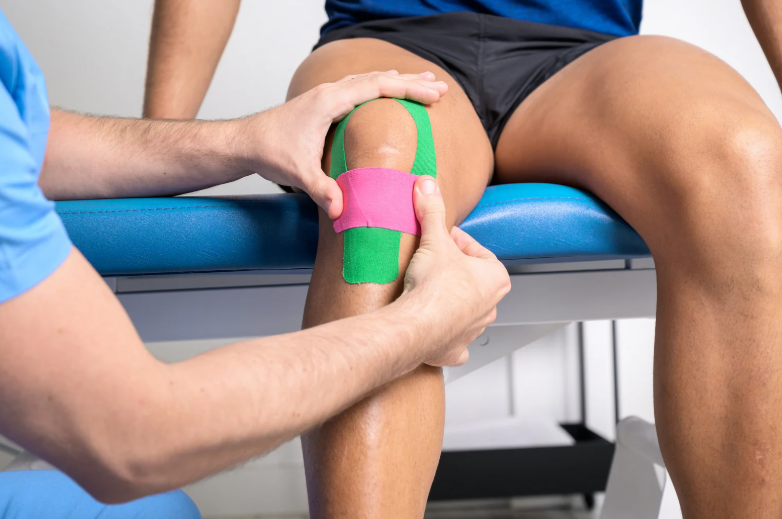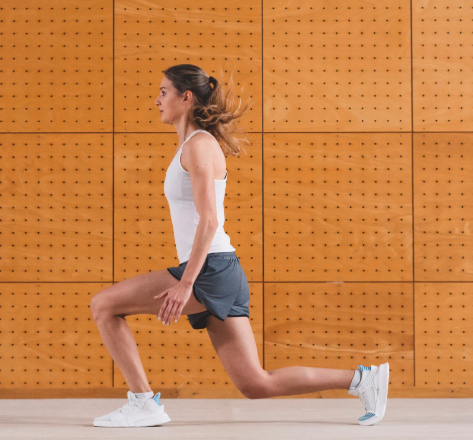Osgood–Schlatter disease (OSD) is a prevalent overuse injury affecting the knee, particularly common among active children and adolescents aged 8 to 15 who participate in sports involving frequent running and jumping, such as soccer, basketball, and athletics. This condition arises due to repetitive stress on the patellar tendon where it attaches to the tibia (shinbone), leading to inflammation and pain at the tibial tuberosity—the bony prominence just below the kneecap.
Common Symptoms:
- Pain and tenderness below the kneecap
- Swelling around the tibial tuberosity
- Pain that intensifies with physical activities like running, jumping, or kneeling
- Development of a noticeable bony lump beneath the kneecap
Diagnosis:
Healthcare professionals diagnose Osgood–Schlatter disease based on a child’s medical history, reported symptoms, and a physical examination. Typically, imaging tests like X-rays are unnecessary unless there’s a suspicion of other conditions. During the examination, the clinician will assess tenderness over the tibial tuberosity, inquire about recent growth spurts and sports involvement, and evaluate the knee’s range of motion and muscle flexibility.

Physiotherapy Management:
Physiotherapy is instrumental in managing Osgood–Schlatter disease , aiming to reduce pain, enhance flexibility, and strengthen the muscles surrounding the knee, thereby allowing continued participation in activities with minimal discomfort. Key physiotherapy strategies include:
- Activity Modification: Temporarily reducing or altering high-impact activities to alleviate stress on the knee.
- Stretching and Strengthening Exercises: Focusing on the quadriceps, hamstrings, and gluteal muscles to support knee function.
- Taping and Bracing: Utilising supportive devices to decrease strain on the tibial tuberosity.
- Pain Management: Applying ice packs to the affected area and educating on appropriate rest periods.

Exercise Program for Osgood–Schlatter Disease:
A structured exercise regimen that balances flexibility and strengthening exercises can be beneficial. It’s advisable to perform flexibility exercises daily and strengthening exercises every other day to prevent overloading. Here’s a sample program:
| Day | Flexibility Exercises | Strengthening Exercises |
|---|---|---|
| Monday | Quadriceps Stretch, Hamstring Stretch, Calf Stretch | Wall Squats, Step-Ups |
| Tuesday | Quadriceps Stretch, Hamstring Stretch, Calf Stretch | — |
| Wednesday | Quadriceps Stretch, Hamstring Stretch, Calf Stretch | Lunges, Glute Bridges |
| Thursday | Quadriceps Stretch, Hamstring Stretch, Calf Stretch | — |
| Friday | Quadriceps Stretch, Hamstring Stretch, Calf Stretch | Step-Ups, Bulgarian Split Squat |
| Saturday | Quadriceps Stretch, Hamstring Stretch, Calf Stretch | — |
| Sunday | Quadriceps Stretch, Hamstring Stretch, Calf Stretch | Banded Crab Walk, Lunges |
Note: Ensure each exercise is performed with proper form. Consulting a physiotherapist before starting the program is recommended.

Continued Participation in Sports:
Children with Osgood–Schlatter disease don’t necessarily need to cease all sports activities. However, modifying activity levels to reduce knee strain is crucial. Physiotherapists can provide guidance on maintaining physical activity while minimizing pain. Recommendations include:
- Temporarily reducing high-impact activities.
- Engaging in low-impact sports such as swimming or cycling.
- Using knee taping or braces for additional support during activities.
Prognosis:
Osgood–Schlatter disease is generally a self-limiting condition, meaning it often resolves as the child completes their growth phase. Symptoms can persist for several months but typically improve within 12 to 24 months. If pain is severe, limits daily activities, persists beyond two years, or if there’s a significant enlargement of the bony lump below the knee, further medical evaluation is warranted.
At our clinic, we recently treated a young rugby union player named Luca, who was experiencing knee pain due to Osgood-Schlatter Disease (OSD). Despite the discomfort, Luca was eager to return to the field as soon as possible.
Example Patient:
Initial Assessment:
Luca presented with classic Osgood–Schlatter disease symptoms, including tenderness and swelling just below the kneecap, exacerbated by physical activity. Understanding his commitment to rugby, we aimed to develop a treatment plan that would facilitate a swift yet safe return to play.
Treatment Plan:
- Activity Modification: We advised Luca to rest from high-impact activities for one week to reduce inflammation.
- Strapping Technique: To support the affected area and alleviate pain during movement, we applied a specific strapping technique designed for kneecap maltracking and OSD. This method involves:
- – Cutting a strip of K tape 6 cm plus the width of the patients knee
- – Cutting a second strip which is onlt 4 cm plus the wirth of the knee
- – The longer piece is used to lift the kneecap up towards the hip – applied with tension, forming a ‘U’ Shape
- – The shorter piece is applied on the outside of the knee which is applied towards the inside of the knee, bringing the knee cap inwards with tension.
- This technique provides immediate pain relief and supports the knee during activity.
- Parental Involvement: We recorded the strapping procedure and provided Luca’s parents with the video, ensuring they could replicate the technique for future games.
Outcome:
After a week of rest and consistent application of the strapping technique, Luca returned to rugby with minimal discomfort. The support from the tape allowed him to participate fully while safeguarding his knee from further strain.
Conclusion:
Luca’s case highlights the effectiveness of tailored treatment plans and the importance of involving family members in the management process. With appropriate care and support, young athletes like Luca can continue to engage in the sports they love while managing conditions like Osgood–Schlatter disease.
For a visual guide on a similar strapping technique used, you can refer to this instructional video:
Final words:
Osgood–Schlatter disease, while common among active youth, can be effectively managed through appropriate physiotherapy interventions, allowing children to continue participating in sports with minimal discomfort. If your child experiences persistent knee pain, consulting a physiotherapist is a prudent step toward recovery. Feel free to give us a call today on (02) 9806 3077

References & Further Reading:
- Osgood-Schlatter Disease – StatPearls – NCBI Bookshelf
- Osgood-Schlatter Disease (Knee Pain) – OrthoInfo – AAOS
- Osgood-Schlatter Disease: Exercises – MyHealth Alberta
- Osgood-Schlatter Disease Treatment & Management – Medscape
- Long-term Prognosis and Impact of Osgood-Schlatter Disease – PMC
- Activity Modification and Knee Strengthening for Osgood-Schlatter Disease – PMC
- Surgical Treatment Outcomes of Unresolved Osgood-Schlatter Disease – Wiley Online Library
- Osgood-Schlatter Disease: Appearance, Diagnosis and Treatment – MDPI
- Incidence and management of Osgood–Schlatter disease in general practice – BJGP
- Osgood-Schlatter Disease: A Case Report – JCM Images Case Reports
